Product Overview
† commercial product
Anastrozole is a potent nonsteroidal aromatase inhibitor used to reduce estrogen production in the body. It works by blocking the enzyme aromatase, which converts androgens into estrogens, thereby significantly lowering circulating estradiol levels.[1]
By suppressing estrogen, anastrozole can help slow the growth of estrogen-responsive cancers, and it is primarily indicated for hormone receptor-positive breast cancer in postmenopausal women.[2] Anastrozole was first approved in 1995 for treating advanced breast cancer in postmenopausal patients whose disease had progressed on tamoxifen therapy, and it later gained approval for first line use in metastatic disease (2000) and as adjuvant therapy in early-stage breast cancer (2002).
Clinical trials demonstrated that using anastrozole in the adjuvant setting (after surgery) improves disease-free survival and can be an effective alternative to the older standard tamoxifen in postmenopausal women. In fact, expert oncology guidelines have recommended aromatase inhibitors like anastrozole as part of the optimal adjuvant treatment for postmenopausal women with hormone-positive early breast cancer.[2]
Although not originally FDA-approved for sequential use, studies showed that switching patients to anastrozole after 2-3 years of tamoxifen (instead of continuing tamoxifen for 5 years) led to further improvements in disease-free survival.[3] This finding has informed treatment strategies where a combination of tamoxifen followed by an aromatase inhibitor yields better outcomes than tamoxifen alone.[4]
Anastrozole is now a standard component of therapy in appropriate patients, and its benefits in reducing cancer recurrence have been shown to persist even after completing the planned course of treatment. Long-term follow-up of clinical trials indicates that women who received anastrozole maintain a lower risk of cancer recurrence during the years after stopping therapy, compared to those who took only tamoxifen.[2]
Importantly, Anastrozole Capsules are a compounded prescription medication available exclusively through a 503A compounding pharmacy. This means each preparation is made for an individual patient pursuant to a specific prescription, allowing for personalized dosing strengths not found in commercially available products. For example, while the commercially manufactured anastrozole comes as a 1 mg tablet (brand name Arimidex®), the compounded capsules can be made in smaller strengths (such as 0.1 mg, 0.15 mg, 0.4 mg, 0.75 mg capsules, or 0.125 mg, 0.25 mg, 0.5 mg tablets) to tailor therapy to a patient’s needs.
Because this is a compounded drug, it is not an FDA-approved product and is available only with a valid prescription.[5] Compounded medications do not undergo FDA pre-market review for safety or efficacy, and anastrozole (whether compounded or commercial) should be used only under the supervision of a qualified healthcare provider.[5]
This compounded formulation is dispensed solely by an accredited 503A compounding pharmacy, emphasizing the individualized nature of the therapy and adherence to the highest quality and purity standards in preparation.
General dosing: For its approved indication in breast cancer, the typical dosage of anastrozole is 1 mg taken orally once daily. In the adjuvant treatment of early-stage breast cancer (post-surgery), therapy with 1 mg daily is usually continued for 5 years, although some treatment plans may extend hormonal therapy up to 7-10 years by incorporating sequential treatments (for example, 5 years of an aromatase inhibitor or 2-3 years of tamoxifen followed by an aromatase inhibitor to complete 5 total years, etc.). For metastatic or advanced breast cancer in postmenopausal women, 1 mg daily is given continuously until there is disease progression or an unacceptable toxicity that necessitates stopping. It’s important to take anastrozole at the same time each day to maintain consistent blood levels. The dose of 1 mg daily has been found to maximally suppress estrogen levels; higher doses do not significantly increase estrogen suppression but may increase side effects, which is why 1 mg is the standard dose. Anastrozole can be taken with or without food according to patient preference; food does not significantly affect its absorption or efficacy.[12] If a dose is missed, the patient should take it as soon as they remember on the same day. If it is almost time for the next dose, however, they should skip the missed dose and resume the regular schedule (doubling up doses is not recommended).
In certain scenarios, prescribers may choose individualized dosing strategies using compounded anastrozole (as capsules or tablets in non-standard strengths). For instance, in some off-label uses, such as managing estrogen-related side effects during testosterone therapy in men or treating pubertal gynecomastia, much lower doses of anastrozole are used than the 1 mg used in breast cancer therapy. Compounding pharmacies can provide doses like 0.25 mg or 0.5 mg which a physician might prescribe to be taken one to three times per week in those off-label contexts. These are not FDA-approved uses, but clinical experience has shown that even fractions of a milligram can meaningfully lower estrogen in men or younger patients when carefully monitored. Any off-label dosing regimen should be determined by a specialist and tailored to the patient’s needs.
The availability of 0.1 mg, 0.125 mg, 0.25 mg, etc., capsules through a compounding pharmacy allows for fine adjustments in dose if a patient is particularly sensitive to side effects or requires a very specific dose for hormonal balance. For example, rather than taking 1 mg and experiencing strong estrogen suppression (which might not be desired outside of cancer treatment), a patient on hormone replacement might do well on 0.25 mg twice weekly; compounding makes that possible since those strengths are not commercially available.
Dose adjustments: In general, no routine dosage adjustments are necessary for anastrozole based on age, kidney function, or mild liver impairment. Pharmacokinetic studies have shown that elderly patients metabolize anastrozole similarly to younger postmenopausal patients; therefore the same 1 mg daily dose is appropriate even in patients over 65 or 70, and efficacy is maintained without additional toxicity just due to age.[13] For patients with renal impairment, including those with moderate kidney issues, the clearance of anastrozole is not significantly reduced, so the standard dose is maintained. There is also no dose change required for patients with mild to moderate hepatic impairment; those with stable liver cirrhosis, for example, were found to have anastrozole blood levels only modestly higher than normal, and still within a safe range. However, because severe liver dysfunction (such as markedly elevated liver enzymes or decompensated cirrhosis) has not been specifically studied, caution is advised in that population. In practice, if a patient with severe hepatic impairment must be treated with anastrozole, the doctor might choose to monitor blood levels or effects more closely but still start at 1 mg due to lack of data for a lower effective dose. Anastrozole is not indicated for pediatric or adolescent patients, so pediatric dosing is not established; its use in those under 18 is not recommended.[12]
To optimize absorption and consistency, patients are advised to take anastrozole at approximately the same time each day. If stomach upset occurs, taking it with a meal or a glass of water may help (though food is not required). The capsule or tablet should be swallowed whole and not crushed or chewed, as the medication is bitter and not intended for buccal absorption. Because the treatment duration in cancer is long (years), patients should be counseled on adherence and the importance of daily dosing even when feeling well. Missing doses can reduce the drug’s effectiveness since estrogen suppression might be incomplete. In the event that a dose is missed one day, it should simply be taken the next day as usual; doubling up the next dose is not advised as it may increase side effect risk without added benefit.
Monitoring and modifications: During anastrozole therapy, doctors will monitor the patient’s response (e.g., through periodic exams, tumor markers or imaging for cancer patients) and side effects. If side effects are intolerable, a treatment interruption of a few days can be considered to see if symptoms improve, or supportive treatments can be introduced. Sometimes switching to another aromatase inhibitor is possible if one agent isn’t well tolerated. There is no evidence of a withdrawal effect or need to taper off anastrozole; when the prescribed course (e.g., 5 years) is completed, it can simply be discontinued as directed. Anastrozole does not require tapering because it does not cause hormonal “surges” when stopped; estrogen levels will gradually return to pre-treatment levels based on natural production. After stopping anastrozole, women who are postmenopausal will continue to be postmenopausal (their ovaries remain non-functional), so any return of estrogen comes only from peripheral aromatization resuming.
In summary, the standard adult dose of anastrozole for breast cancer is 1 mg daily, usually for 5 years in the adjuvant setting, or until progression in advanced disease. No dose adjustments are typically needed for age or mild organ dysfunction.[12] For non-standard scenarios, doses are individualized by the prescriber, and the compounded form of anastrozole allows flexibility in achieving the precise dose required for each patient’s therapeutic goals.
Anastrozole’s mechanism of action is centered on its ability to inhibit aromatase, the key enzyme responsible for the final step in estrogen biosynthesis. Aromatase converts androgens (such as androstenedione and testosterone) into estrogens (estrone and estradiol) in various tissues. Anastrozole binds competitively to the aromatase enzyme, thereby preventing it from catalyzing this conversion. As a result, estrogen production is profoundly reduced: continuous daily dosing of anastrozole can lower serum estradiol levels by approximately 80 % from baseline.[6] This drastic estrogen suppression is beneficial in estrogen-sensitive cancers, as it deprives tumor cells of the estrogen stimulation needed for their growth and proliferation. By removing the estrogen “fuel,” anastrozole effectively induces a hormonal blockade that can slow or regress the growth of hormone-dependent breast cancer cells.[2] In clinical settings, this mechanism translates into tumor shrinkage or delayed progression in many patients with estrogen receptor-positive malignancies when endogenous estrogen is the primary driver of tumor growth.
Anastrozole is an oral, highly selective non-steroidal aromatase inhibitor, meaning it was structurally designed to target the aromatase enzyme without significantly affecting other steroidogenic pathways.[6] Earlier-generation aromatase inhibitors (such as aminoglutethimide) were less selective and could inhibit adrenal steroid production, sometimes necessitating corticosteroid supplementation to compensate for reduced cortisol or aldosterone levels. In contrast, anastrozole does not inhibit the formation of adrenal corticosteroids like cortisol or mineralocorticoids like aldosterone, even at therapeutic doses. This selectivity spares patients from those side effects, as replacement glucocorticoids or mineralocorticoids are not needed when using anastrozole. The drug’s action is largely confined to lowering estrogen levels.
In postmenopausal women, most estrogen (estrone and estradiol) is produced by aromatization in peripheral tissues (e.g. fat, muscle, liver), since the ovaries have ceased estrogen output.[2] By blocking aromatase in these extragonadal sites, anastrozole effectively reduces overall estrogen availability. It’s worth noting that in premenopausal women, the ovaries produce estrogen in large quantities; aromatase inhibitors like anastrozole cannot completely suppress ovarian estrogen production, which is why they are not effective as lone therapy in women with functioning ovaries. Additionally, aromatase activity within breast tumor tissue itself is thought to be minimal in many cases, meaning most of the estrogen driving a tumor’s growth comes from systemic circulation rather than local tumor production.[7]
Overall, the mechanism of anastrozole provides a more complete estrogen deprivation than older hormonal strategies (such as ovarian ablation alone or selective receptor blockade) in postmenopausal patients, without exerting intrinsic estrogenic or androgenic effects on other hormone receptors. This focused action results in a medication that is generally well-tolerated in terms of endocrine side effects and is profoundly effective at reducing estrogen levels that feed hormone-sensitive cancers.
Anastrozole is a prescription medication that should only be used under careful medical supervision, and there are several important contraindications and precautions to consider before starting therapy. Absolute contraindications include any history of hypersensitivity or severe allergic reaction to anastrozole or any of the formulation’s components. Patients who have experienced an allergic reaction (such as anaphylaxis, angioedema, or severe skin rash) with anastrozole in the past must not take it again, as life-threatening reactions could recur. Additionally, women who are pregnant or may become pregnant must not use anastrozole, due to the high risk of fetal harm (anastrozole is classified as FDA pregnancy category X and is contraindicated in pregnancy; see “Pregnancy” section).[8] Anastrozole offers no therapeutic benefit in premenopausal women with breast cancer and could endanger a developing fetus if the woman were unknowingly pregnant, so it is strictly avoided in anyone who is pregnant or trying to conceive. Breastfeeding is also discouraged while on anastrozole, as it is uncertain if the drug passes into breast milk and it could potentially affect a nursing infant.
Generally, anastrozole is indicated only for postmenopausal adult patients, and its safety and efficacy have not been established in children or adolescents under 18. It should not be used in women who have not completed menopause unless they are in a clinical trial setting combined with ovarian suppression, because functioning ovaries will continue to produce estrogen that anastrozole cannot fully block, rendering the treatment ineffective in that population.
Certain precautions should be considered for patients with pre-existing medical conditions or those on concurrent therapies. Patients with a history of heart disease or coronary artery disease should inform their provider, as there have been observations of slightly higher rates of ischemic cardiovascular events (such as angina or myocardial infarction) in patients with pre-existing ischemic heart disease who take anastrozole, compared to those on some alternative therapies. While anastrozole is not absolutely contraindicated in such patients, close monitoring of cardiovascular health and risk factors (like blood cholesterol levels) is advisable because estrogen deprivation can sometimes lead to adverse changes in lipid profile and vascular function.
Similarly, patients with osteoporosis or low bone mineral density (BMD) require careful consideration: long-term anastrozole use is associated with increased bone turnover and bone mineral loss, which can exacerbate osteoporosis or heighten fracture risk. Healthcare providers will often assess baseline BMD and continue periodic bone density monitoring during anastrozole therapy.[9] In patients already at risk for osteoporosis, preventive measures (such as calcium/Vitamin D supplementation or bone-strengthening medications) may be recommended to mitigate this risk.
Concomitant use of estrogen-containing medications is to be avoided with anastrozole. Any form of systemic estrogen therapy-such as hormone replacement therapy, estrogen patches or gels, certain contraceptives, or even high-dose phytoestrogen supplements-could counteract the pharmacologic action of anastrozole and reduce its efficacy. Because anastrozole’s purpose is to eliminate estrogen stimulation, giving exogenous estrogen (or medications like selective estrogen receptor modulators) would undermine the treatment. For this reason, tamoxifen (a selective estrogen receptor modulator) should not be given concurrently with anastrozole either, as studies have shown tamoxifen can lower anastrozole levels and the combination does not improve outcomes.[8] If a patient is switching from tamoxifen to anastrozole, it is recommended to discontinue tamoxifen before starting anastrozole therapy to avoid this interaction.
Patients should also disclose if they are taking any other medications, including over-the-counter supplements, so the healthcare provider can screen for less obvious interactions (though anastrozole has a low propensity for pharmacokinetic drug interactions, as discussed below).
Hepatic impairment is another consideration. Anastrozole is primarily metabolized by the liver, and in patients with moderate liver dysfunction or cirrhosis, blood concentrations of the drug may be higher than in individuals with normal liver function. While formal dose adjustment is not usually required in mild-to-moderate hepatic impairment, caution is advised. Such patients should be monitored more closely for side effects, given that clearance of the drug could be reduced by about 30 % in the presence of hepatic cirrhosis or liver disease.[8] Anastrozole has not been studied in patients with severe hepatic impairment; therefore, its use in that setting should be cautious or avoided if the balance of risks and benefits is not clear.
Renal impairment, on the other hand, has not been found to significantly affect anastrozole drug levels; no dose adjustments are generally needed for patients with mild-to-moderate kidney dysfunction. However, patients with severe renal impairment (very high creatinine levels or on dialysis) were not extensively studied, so clinical judgment is necessary in those cases.
In summary, anastrozole is contraindicated in patients with allergy to it and in women who are pregnant. It is intended for postmenopausal use only, and not for premenopausal women or pediatric patients. Caution and monitoring are warranted for patients with a history of heart or circulatory problems, osteoporosis, or liver disease, and concurrent estrogenic therapies must be avoided while on anastrozole.[9] Patients should have a thorough medical evaluation before starting anastrozole to ensure it is safe for their individual situation, and they should remain under regular follow-up to manage any emerging risks or side effects.
Anastrozole has a relatively low potential for pharmacokinetic drug-drug interactions, owing to its specificity for the aromatase enzyme and minimal impact on major drug-metabolizing enzymes at standard doses.[10] In in vitro studies using human liver microsomes, very high concentrations of anastrozole were found to inhibit certain cytochrome P450 enzymes (specifically CYP1A2, CYP2C8/9, and CYP3A4). However, the concentration needed to cause significant inhibition was much higher than those achieved with normal dosing. At clinically relevant doses (1 mg daily), anastrozole does not meaningfully inhibit these CYP enzymes, and it has no significant effect on CYP2D6 or CYP2A6 activity. This suggests that anastrozole is unlikely to interfere with the metabolism of most other medications that are processed by these common liver enzymes.
Consistent with this, drug interaction studies in humans have shown no notable changes in the pharmacokinetics of co-administered drugs. For example, when anastrozole was given to subjects taking warfarin (an anticoagulant that is metabolized by CYP450 pathways), anastrozole did not alter warfarin’s metabolism or its anticoagulant activity. Prothrombin times and other clotting measures remained unchanged, indicating that standard doses of anastrozole do not potentiate or diminish the effect of warfarin.[10] Likewise, no dose adjustment is required when anastrozole is given with medications that induce or inhibit CYP enzymes, in most cases, because anastrozole’s clearance is not heavily dependent on any single pathway and it doesn’t strongly affect others. Nonetheless, it is always prudent for clinicians to review a patient’s full medication list, as new or less common interactions can emerge with broader use of any drug.
From a pharmacodynamic perspective, the most significant interactions with anastrozole involve other hormonal agents. A critical point is that anastrozole should not be combined with tamoxifen or any estrogen-containing therapy. In the large ATAC clinical trial, a subgroup of patients received anastrozole and tamoxifen together, and the results demonstrated a 27 % reduction in anastrozole plasma levels when the drugs were co-administered, compared to anastrozole alone.[10] This reduction likely occurs because tamoxifen or its metabolites can influence estrogen receptors or hepatic enzyme activity in a way that affects anastrozole’s availability. The consequence is that giving tamoxifen concurrently could make anastrozole less effective at suppressing estrogen; and indeed the combination did not prove more effective than either drug alone in clinical outcomes. Therefore, concomitant use of tamoxifen and anastrozole is contraindicated; patients are usually switched from one to the other rather than taking both at the same time.
Similarly, any form of estrogen replacement therapy or estrogenic supplement will work against anastrozole’s mechanism. Even local estrogen treatments, such as vaginal estrogen tablets or creams used for menopausal symptoms, can be absorbed systemically and significantly raise circulating estrogen levels, which reverses the estrogen suppression achieved by the aromatase inhibitor. For instance, studies have shown that vaginal estradiol tablets (used for atrophic vaginitis) substantially increased serum estradiol in women on AIs, thereby negating the drug’s therapeutic effect. Because of this, doctors generally advise against using even “minimal absorption” estrogen products while on anastrozole, especially for a breast cancer patient in whom any estrogen could potentially stimulate residual cancer cells.[11] Non-hormonal alternatives are preferred to manage symptoms like vaginal dryness in these patients.
Aside from hormones, patients should also be cautious about supplements or medications that could have estrogen-like effects. Some herbal products (e.g. those containing phytoestrogens or certain bioidentical hormone creams) might also undermine anastrozole’s action and should be discussed with the healthcare provider. There are no major interactions between anastrozole and common medications like analgesics, antihypertensives, or antibiotics that have been documented. Anastrozole can generally be taken alongside other necessary medications without dose adjustments. It also does not appear to cause clinically significant interactions with chemotherapy agents when used as part of a breast cancer treatment regimen (as often endocrine therapy is given sequentially or concurrently with other treatments in practice without issue).
In summary, the key interaction principles with anastrozole are to avoid estrogenic therapies and avoid combining it with tamoxifen. Otherwise, anastrozole’s selective action and metabolic profile result in few noteworthy drug interactions concerns for most patients.[10] As always, patients should keep an updated list of all drugs and supplements they take and share this with their pharmacist or doctor, who can then monitor for any emerging reports of interactions or contraindicated combinations.
Like all medications, anastrozole can cause side effects, although many patients tolerate therapy relatively well. Because anastrozole’s primary action is to eliminate estrogen production, some side effects reflect symptoms of estrogen deficiency. The most common side effects experienced with anastrozole involve menopausal-type symptoms. For example, hot flashes are very frequently reported; clinical trials observed hot flashes in approximately 11 % to 36 % of women taking anastrozole. Patients may experience sudden episodes of warmth, flushing, and sweating characteristic of hot flashes due to the lowered estrogen levels.
Joint pain and stiffness (arthralgia) are another common complaint, occurring in a significant proportion of patients. Many women describe diffuse aches or stiffness in joints (sometimes similar to arthritis) after some months on anastrozole. Related to this, muscle aches (myalgia) and general body pain can also occur. Fatigue or asthenia (a general sense of weakness and low energy) has been reported by a notable percentage of patients as well, which can sometimes impact daily activities. Some individuals experience mood changes or mild depression, as well as sleep disturbances (insomnia), which may be partly attributable to hormonal changes and partly to the stress of cancer therapy.
Headache and occasional dizziness were observed in a subset of patients during trials, though these are usually mild. Gastrointestinal symptoms are possible too: nausea is common (around 10 % of patients in trials) and vomiting or loss of appetite occurred in a smaller fraction. Typically, these GI symptoms are mild-to-moderate; taking the medication with food or at a different time of day may help if nausea is an issue. Unlike some chemotherapy drugs, anastrozole is not highly emetogenic (does not usually cause severe vomiting).
Thinning of hair (alopecia) has been noted in a few cases; this is usually mild hair thinning rather than complete hair loss, since estrogen plays a role in hair growth cycles. Some women also report vaginal dryness or irritation while on aromatase inhibitors, due to low estrogen levels affecting the vaginal tissues; this can lead to discomfort or pain with intercourse if not managed.[5] Vaginal bleeding may rarely occur when first switching from tamoxifen (or other hormone therapy) to anastrozole, but persistent bleeding should be evaluated by a doctor.[9]
Beyond these common side effects, anastrozole can have impacts on certain health parameters over the longer term. A notable effect of estrogen depletion is on bone health: loss of bone mineral density is a well-recognized side effect of anastrozole. Postmenopausal women on anastrozole experience an accelerated reduction in BMD, which increases the risk of osteoporosis and bone fractures over time. Clinical studies have shown that after several years of therapy, patients on anastrozole had higher rates of fractures (for example, fractures of the spine, wrist, or hip) compared to those on tamoxifen, which has estrogen-like protective effects on bone.[9] In one long-term trial, about 10 % of women on anastrozole experienced a fracture over ~5 years, versus about 7 % on tamoxifen.[4] Healthcare providers often mitigate this risk by monitoring bone density and prescribing calcium, vitamin D, or bone-strengthening medications if appropriate.
Musculoskeletal pain is also among the most common reasons some patients find anastrozole challenging; up to 30-40 % of patients report significant muscle or joint pains during treatment.[5] These aches sometimes lead a patient to consider stopping therapy; in such cases, switching to a different aromatase inhibitor or employing pain management strategies can be discussed.
Anastrozole’s effect on cholesterol metabolism is another consideration. Unlike tamoxifen (which can lower cholesterol), aromatase inhibitors may cause cholesterol levels to rise in some patients. In clinical trials, more women on anastrozole had elevated cholesterol levels (hypercholesterolemia) compared to those on tamoxifen. Approximately 9 % of anastrozole-treated patients experienced increases in blood cholesterol, versus about 3-4 % on tamoxifen.[9] This doesn’t usually produce symptoms on its own, but it could be relevant for long-term cardiovascular health. Doctors might periodically check lipid profiles, especially in patients with pre-existing high cholesterol or other cardiac risk factors and treat as necessary with diet or cholesterol-lowering medication.
Cardiovascular and thrombotic events have been observed at low frequencies. Overall, serious thromboembolic events (like deep vein thrombosis, pulmonary embolism, or strokes) are less common with anastrozole than with tamoxifen (tamoxifen has known pro-thrombotic effects in some women). However, cases of blood clots and stroke have been reported in patients on anastrozole, albeit at rates comparable to or lower than those on tamoxifen. Patients should still be alert to any signs of calf pain/swelling, chest pain, sudden shortness of breath, or neurological changes, and seek immediate medical attention if those occur.
In women with a history of heart disease, as mentioned, a slightly higher incidence of ischemic cardiac events was noted with anastrozole versus tamoxifen (possibly related to tamoxifen’s favorable effects on blood lipids).[9] This includes conditions like angina or heart attack; these events were still relatively uncommon, but statistically higher in the anastrozole group in some studies. Thus, heart health is monitored and standard preventive measures for coronary disease are advised as part of comprehensive care.
Rare but serious adverse reactions have also been reported. A very small number of patients have experienced severe skin reactions such as Stevens-Johnson syndrome or toxic skin eruptions while taking anastrozole. These cases are extremely rare (<0.01 %) and it’s often hard to definitively link the drug, but patients should stop the medication and get prompt medical evaluation if they develop widespread rash with blistering or mucosal involvement. Allergic reactions like hives, swelling of the face/lips, or difficulty breathing are also rare but possible; any signs of an acute allergic response require emergency care.[8]
There have been post-marketing reports of liver function test elevations and, infrequently, hepatitis (liver inflammation) in patients on anastrozole. While direct causality is unclear (especially in cancer patients who may have other reasons for liver enzyme changes), clinicians will monitor liver enzymes periodically. If jaundice or severe liver enzyme elevations occur, discontinuation might be necessary. Hypercalcemia (elevated blood calcium) has been observed in some breast cancer patients with bone metastases early in the course of aromatase inhibitor therapy.[9] This is thought to result from the anti-estrogen effect on bone releasing calcium; appropriate measures (like hydration, calcitonin, or bisphosphonates) may be needed to manage calcium levels.
In summary, the side effect profile of anastrozole is characterized by symptoms of estrogen deprivation (hot flashes, joint pains, vaginal dryness), and long-term risks to bone density and cholesterol profile. Most side effects are manageable and reversible; for instance, bone loss can be addressed with medications and lifestyle changes, and symptoms like hot flashes often improve over time or with supportive treatments. The absence of estrogenic stimulation also means anastrozole avoids some side effects associated with tamoxifen (such as uterine cancer risk or blood clots being significantly less frequent). Patients on anastrozole should maintain regular follow-ups so that any side effects can be addressed early. It’s important to promptly report any severe or unusual symptoms to the healthcare provider. In many cases, the benefits of anastrozole in reducing cancer recurrence will outweigh the risks of these side effects, but each patient’s tolerance and risk factors must be individually weighed.
Anastrozole must not be used during pregnancy. It is classified as an FDA Pregnancy Category X drug, meaning studies have demonstrated evidence of fetal risk, and the risks clearly outweigh any possible benefit in pregnant women. Anastrozole’s pharmacological action, depletion of estrogen, is contraindicated in pregnancy because developing fetuses rely on normal hormonal environments for proper growth. Although anastrozole is intended only for postmenopausal women, in the event that it is taken during pregnancy (for example, if a patient becomes pregnant unknowingly while on therapy), it can cause significant harm to the fetus. Animal studies have shown that anastrozole exposure leads to high rates of pregnancy failure and fetal abnormalities. In pregnant rats and rabbits, anastrozole caused increased pre- and post-implantation loss (meaning more embryos failed to implant or survived) and higher incidence of miscarriage. Fetal development was adversely affected; investigators noted delayed ossification of bones (indicating impaired fetal bone development), decreased fetal body weights, and other signs of fetotoxicity in animals.[8]
These effects are likely due to the critical role estrogen plays in pregnancy; by blocking estrogen synthesis, anastrozole disrupts the hormonal support necessary for a healthy pregnancy. There is no clinical circumstance in which the use of anastrozole would be justified in a pregnant woman, as there is no benefit to offset these grave risks (breast cancer in premenopausal women is treated with other modalities, not aromatase inhibitors alone, because of ineffectiveness in the high-estrogen environment). If a patient inadvertently becomes pregnant during anastrozole therapy, the medication should be stopped immediately, and the patient should be apprised of the potential hazards to the fetus. Unfortunately, because anastrozole is only indicated for use in postmenopausal women, there are no adequate or well-controlled studies of its use in pregnant humans; and it would be unethical to conduct such studies given the known risks. The existing evidence from animal models and the drug’s mechanism strongly indicate that anastrozole can cause birth defects or fetal death if administered to a pregnant woman.[8]
Because of these concerns, women of childbearing potential are generally not candidates for anastrozole unless they have effectively been rendered postmenopausal (such as by ovarian suppression therapy or oophorectomy) and are using reliable contraception. If there is any chance of pregnancy, a pregnancy test should be done before starting anastrozole, and adequate contraception should be continued to prevent pregnancy during treatment. Health care providers will ensure that premenopausal women are not inadvertently placed on anastrozole and will counsel patients on avoiding pregnancy.
Breastfeeding is also not recommended during anastrozole therapy. It is not known whether anastrozole is excreted in human breast milk, but given its lipophilicity and small size, there is a potential it could pass into milk and be ingested by a nursing infant.[8] More importantly, the profound estrogen suppression caused by anastrozole could theoretically affect the nursing mother’s milk production (estrogen can influence the quantity and composition of breast milk). Additionally, due to anastrozole’s anti-estrogenic and potential tumorigenic effects observed in animal studies, there is concern that even small amounts transferred in milk could harm a breastfeeding infant.
Because anastrozole is contraindicated in women who are premenopausal, it would rarely be the case that a woman on anastrozole is lactating (since the drug is meant for postmenopausal use). However, in any situation where anastrozole use is considered necessary, breastfeeding should be discontinued. The general recommendation is that a woman either does not nurse while on anastrozole or does not start anastrozole until she has finished breastfeeding and weaned the child.
In summary, anastrozole should never be used during pregnancy or lactation. Women must be definitively postmenopausal or otherwise not pregnant before starting this medication, and appropriate warnings are provided to ensure it is not inadvertently used in pregnancy.[8] This caution protects against the drug’s strong potential for fetal harm and its unknown effects on infants.
Anastrozole capsules should be stored at room temperature, generally defined as 68°F to 77°F (20°C to 25°C). Brief excursions outside this range (for example, 59°-86°F or 15°-30°C) are permitted, but in general the medication should be kept in a stable, controlled environment. It’s important to protect the capsules from excess heat, moisture, and direct light.[14] Storing the medication in a bathroom medicine cabinet, for instance, is not ideal due to humidity from showers. Instead, keep the capsules in their original prescription bottle or packaging, tightly closed, and in a dry place. A dresser drawer or a closet shelf away from sunlight can work well. Do not freeze the medication and avoid leaving it in extremely hot places (such as inside a car on a hot day). Keep all medications, including anastrozole, out of reach of children and pets; a high shelf or locked cabinet is recommended, as even child-resistant caps are not foolproof.
If the capsules are provided in a pharmacy vial, ensure the cap is fully closed after each use to keep out moisture. It’s wise to retain the desiccant (if provided) in the bottle, as it helps absorb moisture; just do not swallow or remove the desiccant packet. Do not use the medication beyond the labeled beyond-use date or expiration date. Compounded capsules will have a beyond-use date indicating how long the preparation is stable; after this date, any remaining capsules should be discarded according to proper medication disposal guidelines.[14]
Disposal: Do not flush anastrozole capsules down the toilet or pour them into a drain, as this can contaminate the water supply. Instead, if you have unused or expired capsules, see if your community has a drug take-back program or ask the pharmacy if they will take back unused meds. If those options are not available, you can mix the capsules (out of their original container) with an unpalatable substance like used coffee grounds or cat litter in a sealed bag and dispose of it in household trash; this helps prevent accidental ingestion by others. Always remove or obscure any personal information on prescription labels before disposing of medicine bottles.
By following proper storage recommendations, you ensure that the anastrozole remains as effective as possible for the duration of its shelf life. If you ever notice any changes in the capsules (such as damage, discoloration, or an unusual smell), consult the pharmacist before continuing use. However, anastrozole capsules typically do not show obvious signs of degradation when stored correctly. Always keep the medication in a secure location; this is a potent prescription drug and should only be taken by the individual for whom it was prescribed. If you have any doubts about how to store or dispose of your anastrozole, your pharmacist can provide guidance.
- Plourde, P. V., Dyroff, M., & Dukes, M. (1994). Arimidex®: A potent and selective fourth-generation aromatase inhibitor. Breast Cancer Research and Treatment, 30(2), 103-111.
- Winer, E. P., Hudis, C., Burstein, H. J., et al. (2005). American Society of Clinical Oncology technology assessment on the use of aromatase inhibitors as adjuvant therapy for postmenopausal women with hormone receptor-positive breast cancer: Status report 2004. Journal of Clinical Oncology, 23(3), 619-629.
- ATAC (Arimidex, Tamoxifen Alone or in Combination) Trialists’ Group. (2008). Effect of anastrozole and tamoxifen as adjuvant treatment for early-stage breast cancer: 100-month analysis of the ATAC trial. Lancet Oncology, 9(1), 45-53.
- Boccardo, F., Rubagotti, A., Puntoni, M., et al. (2005). Switching to anastrozole versus continued tamoxifen treatment of early breast cancer: Preliminary results of the Italian Tamoxifen Anastrozole Trial. Journal of Clinical Oncology, 23(22), 5138-5147.
- Jonat, W., Gnant, M., Boccardo, F., et al. (2006). Effectiveness of switching from adjuvant tamoxifen to anastrozole in postmenopausal women with hormone-sensitive early-stage breast cancer: A meta-analysis. Lancet Oncology, 7(12), 991-996.
- Goss, P. E., & Gwyn, K. (1994). Current perspectives on aromatase inhibitors in breast cancer. Journal of Clinical Oncology, 12(12), 2460-2470.
- Bradlow, H. L. (1982). A reassessment of the role of breast tumor aromatization. Cancer Research, 42(8 Suppl), 3382s-3386s.
- AstraZeneca Pharmaceuticals LP. (2009, April). Arimidex® (anastrozole) [Package Insert]. Wilmington, DE.
- AstraZeneca Pharmaceuticals LP. (2013, May). Arimidex® (anastrozole) [Package Insert]. Wilmington, DE.
- AstraZeneca Pharmaceuticals LP. (2002, October). Arimidex® (anastrozole) [Package Insert]. Wilmington, DE.
- Kendall, A., Dowsett, M., Folkerd, E., & Smith, I. (2006). Caution: Vaginal estradiol appears to be contraindicated in postmenopausal women on adjuvant aromatase inhibitors. Annals of Oncology, 17(4), 584-587.
- Drugs..com. (2024, August 9). Anastrozole Dosage Guide with Precautions. Retrieved from https://www.drugs.com/dosage/anastrozole.html
- .de Ronde, W., & de Jong, F. H. (2011). Aromatase inhibitors in men: Effects and therapeutic options. Reproductive Biology and Endocrinology, 9, 93.
- U.S. Food and Drug Administration (FDA). (n.d.). Compounding and the FDA: Questions and Answers. Retrieved January 2025, from https://www.fda.gov/drugs/human-drug-compounding/compounding-and-fda-questions-and-answers
What is anastrozole and what is it used for?
Anastrozole is a prescription medication that lowers estrogen levels by inhibiting the aromatase enzyme. It’s used primarily to treat hormone receptor-positive breast cancer in postmenopausal women by cutting off the tumor’s estrogen supply. In breast cancer therapy, it helps reduce the risk of cancer recurrence after surgery or slows the growth of metastatic tumors. It is not a chemotherapy drug, but rather a form of hormonal (endocrine) therapy. Aside from its main oncology use, anastrozole is sometimes used off-label in other conditions where reducing estrogen is desired, but its chief approved use is in breast cancer treatment.
How are compounded anastrozole capsules different from the commercial tablets?
The active ingredient (anastrozole) is the same in both, but compounded capsules are made in a compounding pharmacy and can be customized to different strengths or fillers. The commercial product (brand name Arimidex®) comes only as a 1 mg tablet, a dose that might be too high for certain off-label uses or specific patient needs. Compounded anastrozole capsules, by contrast, can be prepared in lower doses such as 0.25 mg or 0.5 mg, among others, to allow more personalized dosing. This is especially useful if a doctor wants a patient to take a very small dose or a non-standard regimen. Additionally, if a patient has an allergy to an inactive ingredient in the commercial tablet, a compounding pharmacist can formulate the capsule with different excipients (fillers) that the patient tolerates. Therapeutically, both forms will work the same in terms of blocking aromatase; the differences are in dosage flexibility and formulation. Remember that compounded capsules are only available by prescription from a compounding pharmacy and are not mass-produced or FDA-approved in the way the brand-name tablets are.
Why do I need a prescription to get anastrozole capsules from a compounding pharmacy?
Anastrozole is a potent medication that can significantly alter hormone levels, so it is categorized as a prescription-only drug. All aromatase inhibitors, including anastrozole, require evaluation and monitoring by a healthcare provider to use safely. The law mandates that compounded medications (503A compounding) be dispensed only pursuant to a specific prescription for an individual patient, as opposed to being sold over the counter. This ensures a licensed practitioner has determined that anastrozole is appropriate for you and has tailored the dose to your situation. It also allows the pharmacist to prepare the custom capsule exactly as prescribed. Because compounded anastrozole capsules are not an off-the-shelf product, the pharmacy must have a doctor’s prescription in hand to mix and dispense them. In short, the prescription requirement is there for patient safety and to comply with regulatory standards. It assures that a physician is overseeing your treatment with this medication and that you’ll be monitored for effectiveness and side effects throughout therapy.
How does anastrozole work to treat cancer?
Anastrozole works by blocking the production of estrogen, a hormone that can stimulate the growth of certain breast cancer cells. Many breast cancers are “estrogen receptor-positive,” meaning estrogen in the body binds to those cancer cells and encourages them to grow and divide. Anastrozole inhibits aromatase, the enzyme responsible for converting androgens into estrogen. In postmenopausal women, the ovaries are no longer the primary source of estrogen; instead, estrogen is made in peripheral tissues (like fat and muscle) via aromatase. By shutting down this conversion process, anastrozole drastically lowers the circulating estrogen level. With less estrogen around, hormone-dependent cancer cells are deprived of their growth signal. Over time, this can cause estrogen-sensitive tumors to shrink or at least stop progressing. Essentially, anastrozole starves the cancer of estrogen. It is effective only in postmenopausal women (or those who have had their ovaries suppressed), because in premenopausal women the ovaries produce estrogen in large quantities that anastrozole alone cannot overcome. In summary, anastrozole’s estrogen-lowering action slows down or stops the growth of breast cancers that rely on estrogen.
Can premenopausal women use anastrozole?
Generally, no, anastrozole is not recommended for premenopausal women. It is approved and indicated for postmenopausal women. The main reason is that in premenopausal women, the ovaries are still actively producing estrogen. Anastrozole can suppress estrogen production in peripheral tissues, but it doesn’t stop the ovaries from making estrogen. So, a premenopausal woman’s estrogen levels would remain too high for anastrozole to be effective in treating breast cancer.
Clinical studies of anastrozole didn’t include women with functioning ovaries unless steps were taken to also suppress ovarian function. In fact, using anastrozole alone in a premenopausal woman could trigger the body to produce more gonadotropins (because the brain senses low estrogen and tries to stimulate the ovaries), potentially leading to ovarian cysts or other issues. Moreover, anastrozole is contraindicated in women who are pregnant or might become pregnant, due to risk of fetal harm.
In certain special situations (like a clinical trial), a premenopausal woman might be given an aromatase inhibitor after medically inducing menopause or alongside ovarian suppression injections, but this is a specialized scenario. For almost all premenopausal patients with breast cancer, other treatments (such as tamoxifen, or ovarian suppression plus another drug) are preferred. Once a woman has truly reached menopause (either naturally or via surgery), aromatase inhibitors like anastrozole become viable and often very effective options.
Is anastrozole ever used in men?
Yes, anastrozole is used off-label in certain situations for males, although it is not an FDA-approved indication. One common context is in men undergoing testosterone replacement therapy (TRT). In some men, TRT can cause a rise in estrogen (since excess testosterone can convert to estrogen via aromatase), potentially leading to side effects like nipple tenderness, gynecomastia (breast tissue enlargement), fluid retention, or mood changes. Doctors may prescribe a low dose of anastrozole to such patients to keep estrogen levels in check.[5]
Anastrozole in men can increase testosterone levels modestly by preventing that conversion to estradiol, and some studies have shown it can help with conditions like idiopathic infertility or hypogonadism by shifting the testosterone-estrogen balance in favor of testosterone. It has also been used in adolescent boys with pubertal gynecomastia (benign breast enlargement) or those with short stature to delay epiphyseal closure and potentially augment growth, again, off-label. However, it’s important to emphasize that long-term safety and efficacy of anastrozole in men isn’t as well established as it is in women with breast cancer.[13]
Men generally tolerate anastrozole well at the small doses used (for example, 0.5 mg a couple times a week), but they can still experience side effects of low estrogen (joint pain, fatigue, decreased bone density over time). Another population where anastrozole is occasionally considered is men with estrogen-sensitive breast cancer (which is rare, but men can get breast cancer too). In practice, tamoxifen is more often used for men with breast cancer, but anastrozole might be tried in certain cases if appropriate.
Overall, while anastrozole is not “routinely” used in men, it certainly has its off-label niches. If a man is prescribed anastrozole, it should be by a physician knowledgeable in hormone management, and there should be monitoring of estrogen and testosterone levels, as well as bone health for longer-term use.[13]
What are the common side effects of anastrozole?
Common side effects of anastrozole stem from its lowering of estrogen; in many ways they resemble menopause symptoms. Most patients will experience some hot flashes or episodes of sweating and warmth, as the body adjusts to an estrogen drop. Many patients (up to one-third or more) report joint aches or stiffness and muscle pains; this musculoskeletal discomfort can range from mild to sometimes significant, often affecting the hands, wrists, knees, or back. It’s one of the hallmark side effects of aromatase inhibitors. Fatigue is another frequent complaint; patients might feel more tired than usual or have less energy day-to-day.
Some women note mood changes, such as mild depression or just not feeling like themselves emotionally, as well as trouble sleeping at night. Headaches occur in some patients, and occasionally dizziness or light-headedness has been noted. Because estrogen affects the hair and skin, a few women might observe thinning hair over time or a drier skin texture. Nausea can occur when first starting the medication, though it’s generally mild; taking anastrozole with food can help if stomach upset is an issue.
Another effect of low estrogen is vaginal dryness; anastrozole can cause thinning of the vaginal tissues, leading to dryness or discomfort during intercourse.[5] Sometimes over-the-counter moisturizers or lubricants are suggested to alleviate this. Unlike tamoxifen, anastrozole does not typically cause uterine lining thickening or irregular bleeding; in fact, if a woman has been on tamoxifen and switches to anastrozole, any menstrual-like bleeding usually stops (if she was postmenopausal, she shouldn’t have bleeding at all after switching; any new vaginal bleeding on anastrozole should be evaluated by a doctor).
It’s also worth noting that while tamoxifen often causes slight weight gain, anastrozole may be weight-neutral or even associated with a small tendency to weight loss in some cases, but experiences vary. Most of these side effects are manageable. For joint pain, for instance, moderate exercise, anti-inflammatory medications, or switching between different AIs can sometimes help. Hot flashes can be addressed with lifestyle measures (dressing in layers, cool environment) or non-hormonal medications if severe.
It’s important to communicate with your healthcare team about side effects; they may have strategies to help you stay on therapy. The good news is that many side effects (like hot flashes and aches) improve after the body gets used to the medication for a few months.
How long will I need to take anastrozole?
The duration of anastrozole therapy depends on the context in which it’s prescribed. In the adjuvant treatment of early breast cancer (after surgery to prevent recurrence), anastrozole is commonly given for 5 years. This five-year duration has been a standard based on clinical trials that showed significant benefit within that timeframe.[2] In some cases, your oncology team might adjust this: for instance, some patients take tamoxifen for 2-3 years and then anastrozole for another 2-3 years, totaling 5 years of therapy (this is called a sequential approach).
There is also a practice of “extended adjuvant therapy”, if you’ve done 5 years and are tolerating it, and your cancer had certain high-risk features, your doctor might discuss continuing hormonal therapy for up to 7 or 10 years (either continuing anastrozole or switching to another aromatase inhibitor or back to tamoxifen). Recent studies have indicated that 10 years of total endocrine therapy can further reduce recurrence in some patients at high risk, though with diminishing returns and more side effects, so it’s a personalized decision.
If you are taking anastrozole for metastatic breast cancer (cancer that has spread), then you would generally continue taking it as long as it is working to control the disease. In that setting, there isn’t a fixed endpoint; it could be taken indefinitely until the cancer shows signs of progression or until side effects or other factors lead to a change in treatment.
For other uses (like off label uses in men or fertility treatments), the duration can vary widely. Some men on testosterone therapy might take anastrozole only intermittently or for as long as they stay on testosterone replacement (which could be years, potentially). Always follow the plan discussed with your healthcare provider.
It’s very important not to stop anastrozole early (or without consulting your doctor), especially in the curative/adjuvant setting, because stopping too soon could increase the chance of cancer coming back. If you’re struggling with side effects, talk to your doctor rather than simply discontinuing; often there are ways to manage side effects or alternative medications that can be tried.
When the planned course is completed, anastrozole can be stopped without needing to taper down. And keep in mind: even though five years may sound long, studies have shown that taking anastrozole for the full recommended duration significantly improves outcomes for breast cancer patients.[2] Your oncology team will help you understand the right length of therapy for your situation based on the latest guidelines and your individual risk factors.
What should I do if I miss a dose of anastrozole?
If you forget to take your daily dose of anastrozole, don’t panic. The general recommendation is that if you remember on the same day, take the missed dose as soon as you recall it. If it’s already the next day or close to your next scheduled dose, do not double up; just skip the missed dose and continue with your regular dosing schedule. Taking a double dose isn’t advisable because it won’t necessarily increase the drug’s efficacy, but it could raise your risk of side effects.
Anastrozole has a relatively long half-life (around 2 days), which means the drug stays in your system for a while. Missing one pill is unlikely to cause a sudden big spike in estrogen or a loss of control of your condition, as long as it’s a rare occurrence. The key is to not make a habit of missing doses; try to take it at the same time each day, perhaps linking it with a daily routine (like brushing teeth or breakfast) so it’s easier to remember. Some patients use a pill organizer or set an alarm reminder.
If you miss doses frequently for any reason (side effects or forgetfulness), talk to your healthcare provider; they can give tips for adherence or address why doses are being missed. But an occasional lapse is human and usually not a serious issue; just resume as normal. It’s important not to discontinue anastrozole altogether without medical advice.
If you accidentally took extra anastrozole (for example, you forgot and took a second pill), there isn’t typically an acute toxicity from a slight overdose; you might experience more intense side effects like a headache or hot flash, but there’s no specific antidote. Still, inform your doctor about any such occurrences.
In summary: if you miss it, take it when you remember on that day; if you don’t remember until the next day, skip it and continue as usual. Consistent daily dosing is ideal for maximum benefit.
Can I take anastrozole during pregnancy or while breastfeeding?
No. Anastrozole should not be taken during pregnancy or while breastfeeding. It is contraindicated in pregnancy because it can cause harm to the developing fetus. Anastrozole falls under Pregnancy Category X; studies in animals have shown it can lead to miscarriages, birth defects, and fetal developmental problems.[8] There is no benefit of giving anastrozole to a pregnant woman, since its indications are for cancers in postmenopausal women, and conversely the potential for serious fetal harm is high.
If a woman becomes pregnant while on anastrozole, she needs to notify her doctor immediately; the medication would be stopped, and the pregnancy would be closely monitored by her obstetrician for any complications. Women taking anastrozole for breast cancer are almost always past their childbearing years or have been rendered menopausal by treatment, so pregnancy is highly unlikely.
Regarding breastfeeding: it’s recommended that nursing mothers do not take anastrozole. It’s unknown if anastrozole passes into breast milk, but many drugs do, and because anastrozole significantly alters hormones (and possibly could affect the infant or reduce milk production), it’s not considered safe. Furthermore, any woman who is breastfeeding is by definition premenopausal (producing estrogen), and thus she wouldn’t typically be on anastrozole in the first place.
If you have a unique situation where anastrozole is being considered and you are of childbearing potential, effective contraception and cessation of breastfeeding would be required. Always discuss family planning and contraception with your healthcare provider when on therapies like anastrozole.
Does anastrozole interact with other medications or supplements?
Anastrozole has relatively few drug-drug interactions, which is good news. It doesn’t significantly affect the metabolism of most common medications. You can generally take it alongside blood pressure medicines, diabetes medicines, pain relievers, etc., without issues. However, the most important interactions to note are with any form of estrogen or estrogen-like substances.
You should avoid taking estrogen replacement therapy, birth control pills that contain estrogen, or even herbal supplements that have estrogenic effects (like certain soy isoflavone supplements or “bioidentical” hormones) while on anastrozole, because these would work against anastrozole’s purpose. Estrogen-containing vaginal creams or rings are also usually avoided, or used only under strict guidance, because even a small amount absorbed could raise estrogen levels.
Another key interaction is with tamoxifen; you should not take tamoxifen and anastrozole at the same time. Studies found that tamoxifen can reduce anastrozole levels in the blood, and there’s no therapeutic benefit in combining them (the combination was no better than one alone, and in fact can make anastrozole less effective).[10] So typically, you’ll be on one or the other, but not both concurrently.
In terms of supplements: besides avoiding those with plant estrogens, there aren’t specific supplements that notoriously interact with anastrozole. Nevertheless, always tell your doctor or pharmacist about all the supplements or vitamins you’re taking. Some people ask about interactions with alcohol or caffeine; there’s no direct interaction with anastrozole, but moderation is always advised, especially since alcohol can affect estrogen levels and overall health.
Anastrozole is processed in the liver, but it doesn’t strongly induce or inhibit the liver enzymes that handle other drugs. For example, anticoagulants like warfarin, or cholesterol meds like statins, have been given with anastrozole without any noted problems. That said, every individual is different, and this doesn’t guarantee no interaction will ever occur, so maintaining open communication with healthcare providers is best.
If you start a new medication (including antibiotics or anything short-term), let the prescribing doctor know you’re on anastrozole. They will double-check an interaction reference if needed, but most likely it will be fine.
In summary: avoid estrogenic medications, don’t double up with tamoxifen, and keep your medical team informed about all drugs and supplements you use. This way, they can ensure your treatment is safe and effective.
Disclaimer: Compounded products are not FDA-approved and have not been evaluated by the FDA for safety or efficacy. This medication should be used only under a licensed healthcare provider’s supervision and dispensed with a valid prescription.
503A vs 503B
- 503A pharmacies compound products for specific patients whose prescriptions are sent by their healthcare provider.
- 503B outsourcing facilities compound products on a larger scale (bulk amounts) for healthcare providers to have on hand and administer to patients in their offices.
Frequently asked questions
Our team of experts has the answers you're looking for.
A clinical pharmacist cannot recommend a specific doctor. Because we are licensed in all 50 states*, we can accept prescriptions from many licensed prescribers if the prescription is written within their scope of practice and with a valid patient-practitioner relationship.
*Licensing is subject to change.
Each injectable IV product will have the osmolarity listed on the label located on the vial.
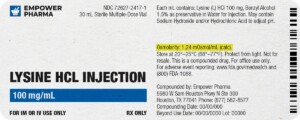
Given the vastness and uniqueness of individualized compounded formulations, it is impossible to list every potential compound we offer. To inquire if we currently carry or can compound your prescription, please fill out the form located on our Contact page or call us at (877) 562-8577.
We source all our medications and active pharmaceutical ingredients from FDA-registered suppliers and manufacturers.





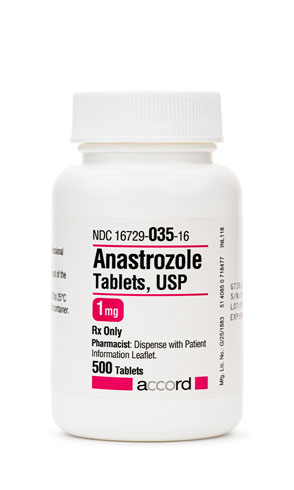
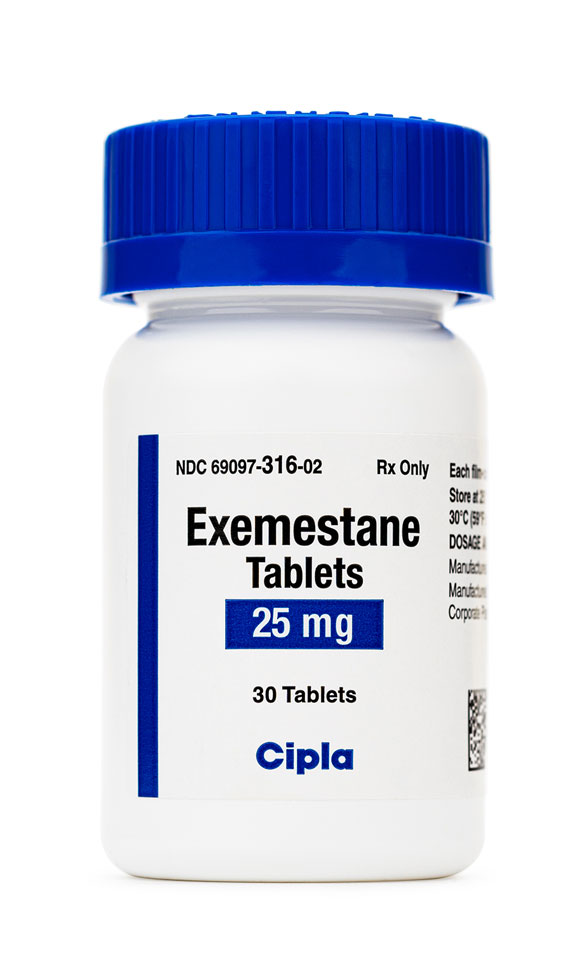 Exemestane Tablets
Exemestane Tablets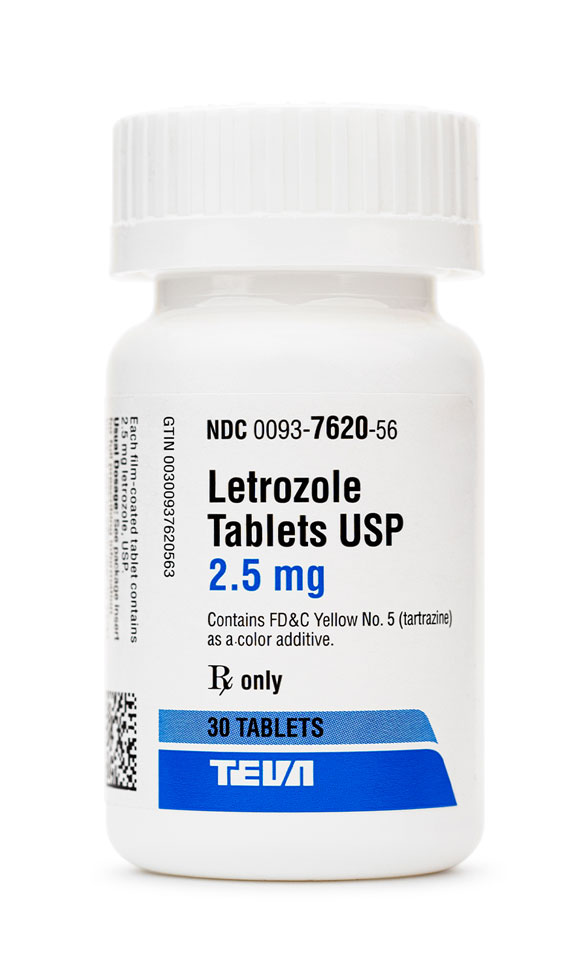 Letrozole Tablets
Letrozole Tablets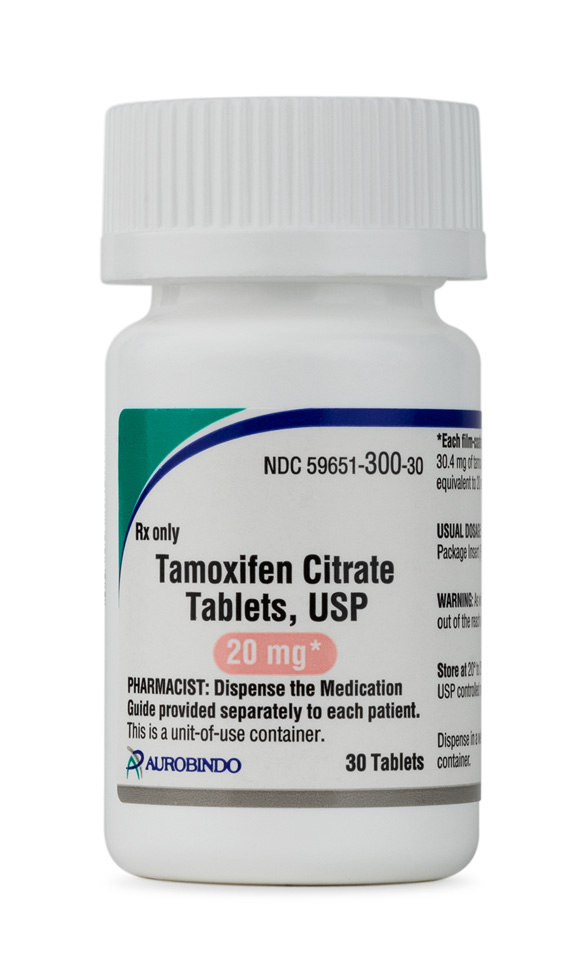 Tamoxifen Citrate Tablets
Tamoxifen Citrate Tablets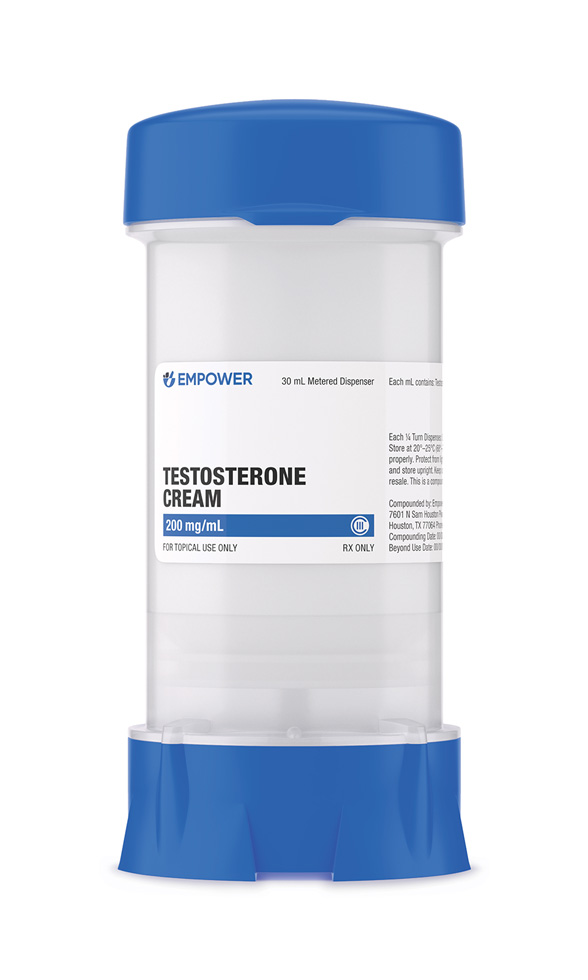 Testosterone Cream
Testosterone Cream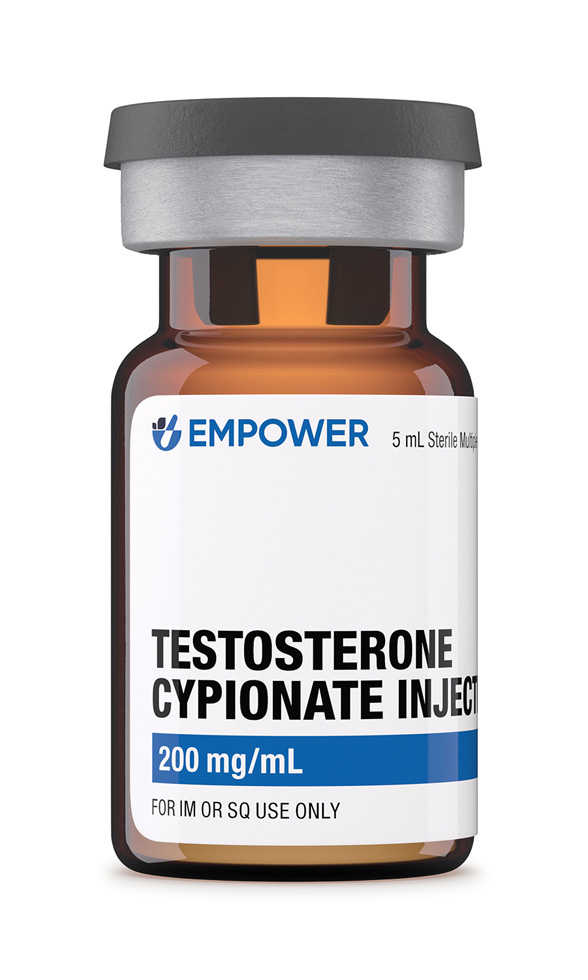 Testosterone Cypionate Injection
Testosterone Cypionate Injection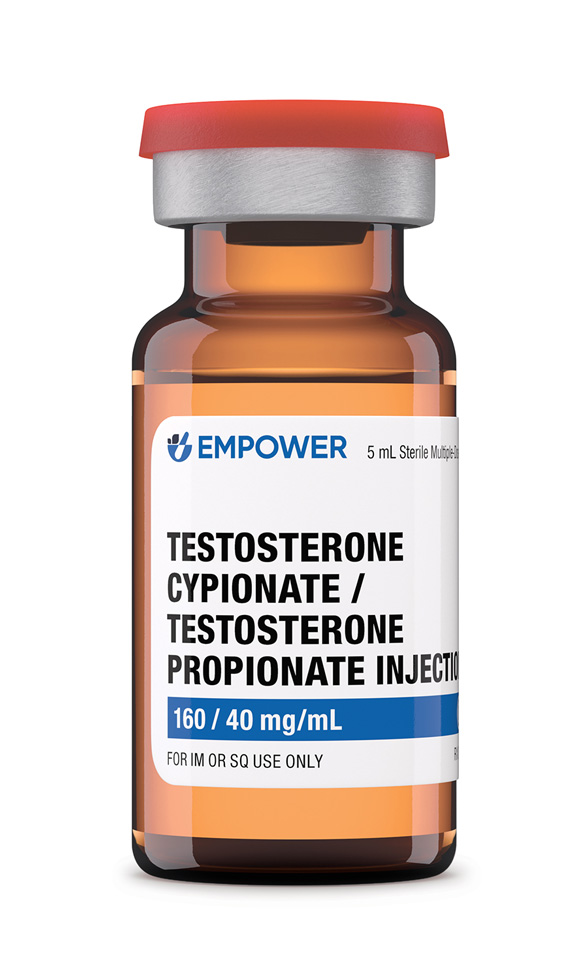 Testosterone Cypionate / Testosterone Propionate Injection
Testosterone Cypionate / Testosterone Propionate Injection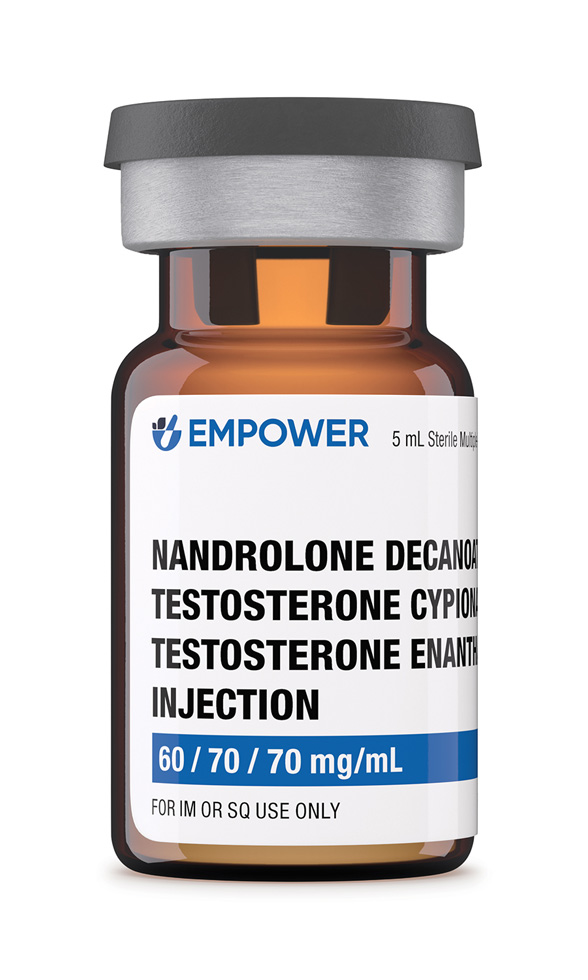 Nandrolone Decanoate / Testosterone Cypionate / Testosterone Enanthate Injection
Nandrolone Decanoate / Testosterone Cypionate / Testosterone Enanthate Injection